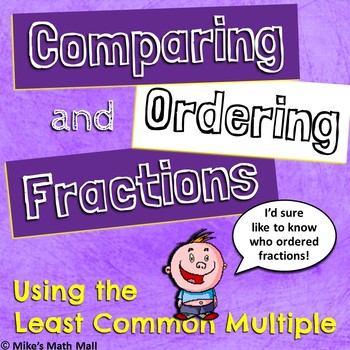Comparing and Ordering Fractions Using the Least Common Multiple (Bundled Unit)
- Zip
Description
Comparing Fractions and Ordering Fractions - This bundled unit introduces a fun, unique method for finding Least Common Multiples (kids really love this method). Your students will then be able to use this technique to help them compare and order fractions throughout the bundle.
Included in this bundled unit:
PowerPoint
This is a very fun, engaging, and interactive 3-part PowerPoint
-Part 1: Finding the Least Common Multiple/Denominator
-Part 2: Comparing Fractions
-Part 3: Ordering Fractions
*Each section contains embedded practice problems that are great for partner practice and immediate concept reinforcement
Please note! Any overlapped text in “edit” mode will not overlap in “play” mode.
Resources
-10 Practice pages covering all three sections (including problem solving)
-3 Quizzes – one per section
-Bundle Test (30 questions)
*Three Pages of Notes with Sample Problems
-Finding the LCM
-Comparing Fractions
-Ordering Fractions
(Great for kids that miss a lesson and/or a great review tool)
Just need part of this bundle?
Finding the Least Common Multiple (Mini Bundle)
Comparing Fractions (Mini Bundle)
Ordering Fractions (Mini Bundle)
*PowerPoint may be incompatible with some Mac software.
I Sincerely Hope this Helps! And Thank You!
Copyright© 2022 Mike's Math Mall
All rights reserved by author.
Electronic distribution limited to single classroom use only.





